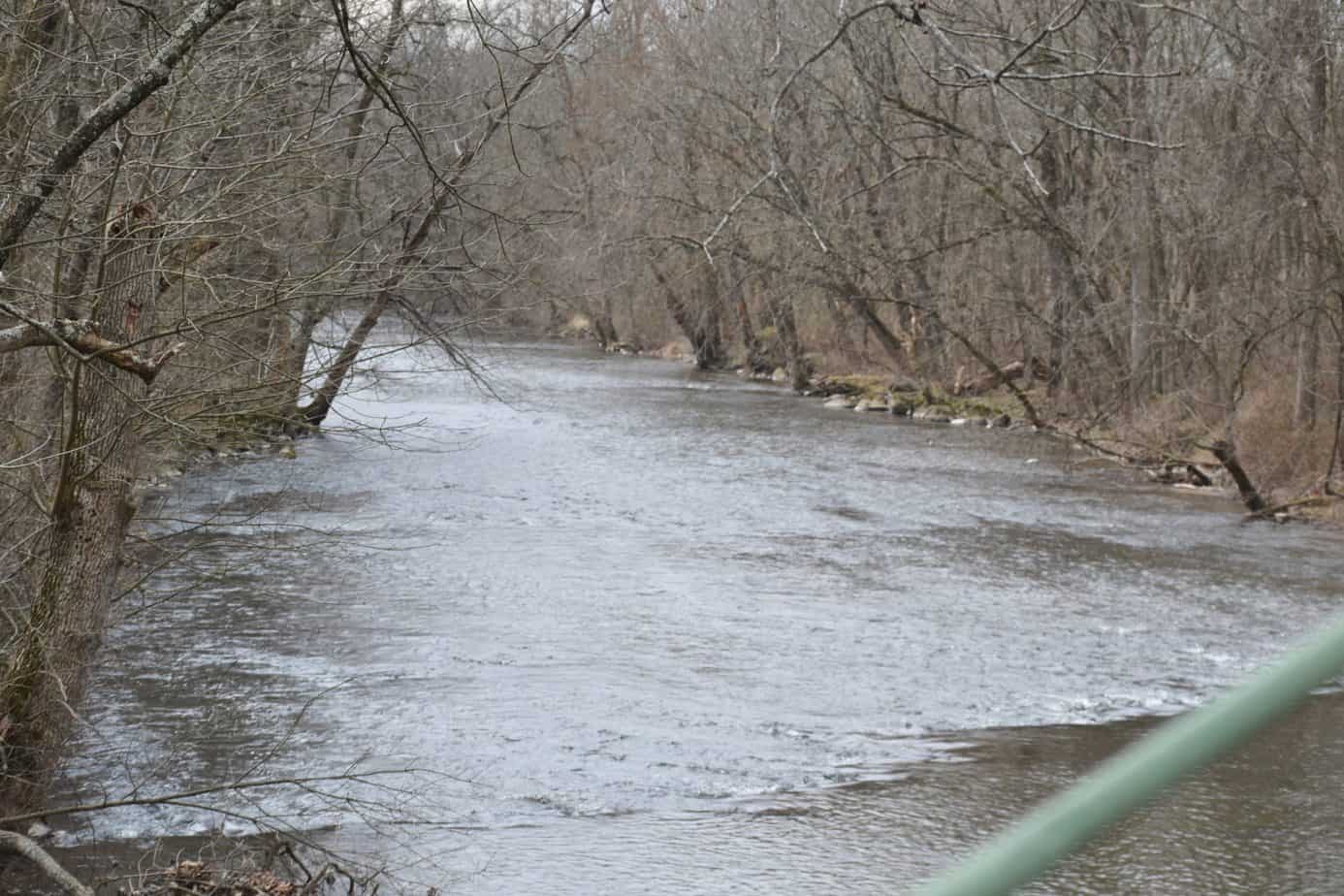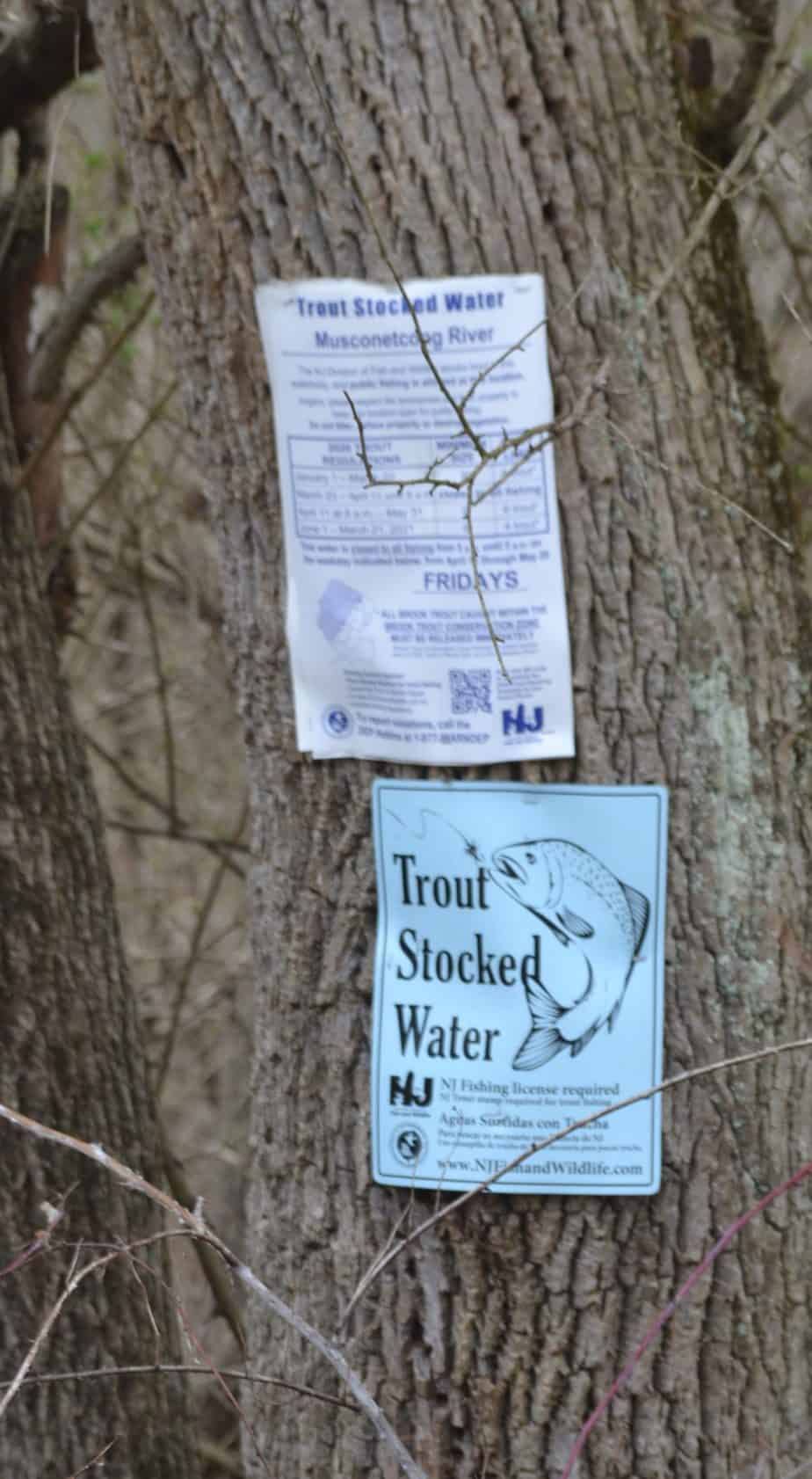Housing plan stirs concern about pollution in the Musconetcong River
HAMPTON BOROUGH, NEW JERSEY – Borough residents and area environmental groups are hoping to stop a proposal for housing that includes a very large sewer-service area they fear will overheat and possibly pollute the Musconetcong River, one of the major tributaries of the Delaware River in New Jersey.
The effluent for a 333-unit residential development will flow into the Musconetcong near this tiny borough, after being treated in a privately operated sewage treatment pant, called a package treatment plant.
The New Jersey Department of Environmental Protection has not yet ruled on the sewer service in this Hunterdon County borough where homes are now on individual septic systems.
The DEP has jurisdiction over the plant through an administrative agreement with the Delaware River Basin Commission. The One Process/One Permit Program provides for entities under the jurisdiction of both the state and the DRBC to receive a single permit, from the state, that incorporates the applicable requirements of both authorities, according to Kate Schmidt, communications specialist for the DRBC.
In order to receive a permit, the plant must not violate the DRBC’s Comprehensive Plan in any
way, Schmidt said. Should the plant be approved, it will receive a DEP permit through the New Jersey Pollutant Discharge Elimination System program, she said.
For more information about the One Process/One Permit Program check here
The DEP received more than 300 comments from the public, including members of the
League of Conservation Voters, Musconetcong Watershed Association, Trout Unlimited and other groups, Alan Hunt, director of policy and grants for the MWA said. More than 40 people commented publicly at a DEP public hearing in the Hunterdon County seat, Flemington, N.J., last month, Hunt said.
Others submitted comments in writing. The project has not yet been presented to the borough planning board.
Hunt said no description of the type of treatment plant has been presented to the DEP but discussion indicates it is a package plant with groundwater discharge. He said the closest privately run sewage treatment plant is in Glen Gardner for the Spruce Hills Condominium. That plant is east of Route 31 and is a groundwater discharge system into the Spruce Run Basin, not the Musconetcong.
Schmidt said she had no information about the Musconetcong Watershed specifically, but there are several small plants that service mobile home parks and developments in the Delaware River Basin.
She doesn’t have an exact number because she cannot access all of the commission files while she has to work at home.
In groundwater discharge, the effluent enters the plant where the sludge settles and is digested by bacteria, the same as in a home septic system. The liquid is then aerated, allowing oxygen to do its job, and then is discharged into the ground where it passes through the natural filtration of the soil.
According to the plans, the sewer service area is 47 acres. It is part of a proposal for the 333-unit housing development in Hampton, which had a population of 1,401 at the time of the 2010 U.S. Census. The development would consist of 142 single-family homes, 146 multi-family attached units and 45 multi-family attached affordable units. An additional 6,000 square feet of commercial space is also included in the plans.
Hunt, who lives in Hampton, said a full build out of the development would increase the
population of Hampton by 60%. The borough is in the Highlands Planning area, he said.
The wastewater flow is projected at 86,175 gallons per day into a subsurface sewage disposal
system, according to the definitive wastewater engineering text produced by Metcalf and Eddy, a well-known Massachusetts wastewater engineering firm.
Package plants are designed for between .01 and .25 million gallons per day of treated effluent, or 100,000 to 250,000 gallons per day.
Tony Dilodovico, president of Tony D Environmental Permitting LLC, told the DEP the sewer service area would be outside the 300-foot riparian zone. He also said the area would not be in a wetland, National Heritage Property site or habitat of any threatened or endangered species.
Geoffrey Goll of PrincetonHydro, a consultant to the MWA, noted the Musconetcong is a C1
stream -- a state designation of high quality water -- which is why it is heavily stocked with trout. He said under DEP rules, there cannot be any measurable change to the temperature or quality of the water.
He said the project is problematic because of the nature of the river as well as the geology of the area.
The Musconetcong leads from Lake Hopatcong to the Delaware River with few major tributaries, Goll said. It is a fast-moving river with cold water that is excellent habitat for trout.
The flow is less impeded in recent years because of the MWA’s project of removing dams all along the river.
The river flows through an area of karst, a kind of carbonate geology that is prone to sinkholes.
These aren’t the sort of sinkholes that swallow cars, Goll noted, but they can range from a nuisance to dangerous. In order to build above these problematic areas, a developer will have to inject grout into the karst, which will eliminate some of the groundwater storage and change the pattern of groundwater movement, Goll explained.
The karst can also interfere with the filtration of the soil, Goll said, because of the openings. He
noted there needs to be dilution of the effluent before it reaches the river.
The proposed wastewater treatment plant could contribute contamination to that water and will
discharge warmer water into the river, Goll said.
While there are regulations against new surface water discharge, Hunt said groundwater
discharge could be allowed.
Hampton is about 10 miles from where the Musconetcong River discharges into the Delaware, he noted. It is identified as a water source area for Trenton and other municipalities farther south.
The development is planned to be served by a well, which would probably need to be very deep, Goll said. Hunt said the project is near the town well and within some of the zones of the wellhead protection area.
Hunt said the property has been discussed for development since 1981. The 137 acres are owned by Jacob Haberman of New York City, who proposed up to 900 units in the 80s, all of which would have been for sale. Most of Haberman’s property was included in the preservation area when the Highlands Act was adopted in 2004. Development is restricted in the preservation area, although there have been some exceptions in a few municipalities.
When the DEP makes a decision it will be adopted or rejected as a site-specific amendment to the Upper Delaware Water Quality Management plan, rather than a general change in DEP rules.




